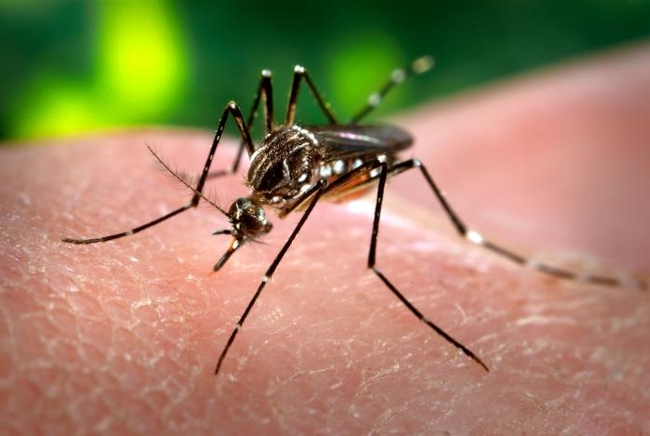Posts Tagged: Mosquitoes
Feuding, Bigamy and Tunneling: Hear About The Eccentric Life of Entomologist Harrison Dyar
Former Smithsonian entomologist Harrison G. Dyar, noted for his research on moths and butterflies, was not your typical entomologist. He feuded with...

Entomologist Marc E. Epstein researched, wrote and published "Moths, Myths and Mosquitoes: The Eccentric Life of Harrison G. Dyar, Jr."
The Most Dangerous Animal on the Planet
What's the most dangerous animal on the planet? No, not rhinos, cape buffaloes, hippos, lions, elephants, crocodiles or sharks. It's an...
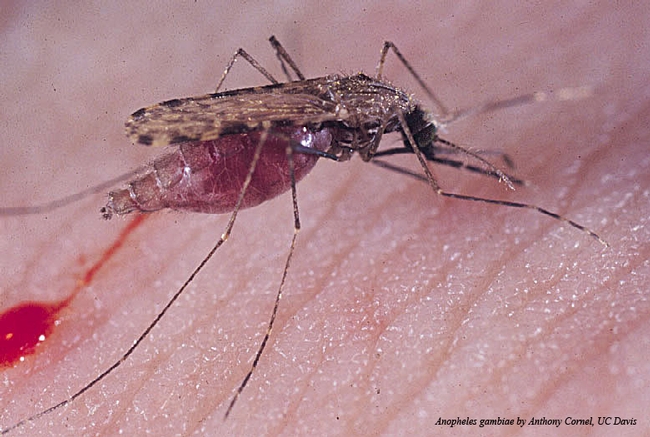
Malaria mosquito, Anopheles gambiae, by medical entomologist Anthony Cornel, UC Davis
Scientists enlist male mosquitoes in fight against disease
Mosquitoes are being turned into mosquito-control workers with the help of scientists at the UC Kearney Agricultural Research and Extension Center in Parlier, reported Barbara Anderson in the Fresno Bee.
Kearney, one of nine UC Agriculture and Natural Resources research and extension facilities across the state, houses a mosquito research lab led by UC Davis entomologist Anthony Cornel. Cornel and his staff are working with the Consolidated Mosquito Abatement District to tacking Aedes aegypti mosquitoes, which have plagued a southeast Clovis neighborhood for three years. Aedes aegypti are capable of spreading dengue, yellow fever and chikungunya.
The scientists are trying a novel control approach. They collected mosquito eggs in Clovis and shipped them to a laboratory in Kentucky, where thousands of harmless male Aedes aegypti mosquitoes were bred. The insects were then dusted with a pesticide and released to mate with females in the infested area. The pesticide doesn't allow the female to produce viable offspring. When the mosquitoes were released, small cups of water were placed nearby to monitor activity. If the water contained pesticide from the mosquitoes, it would kill mosquitoes back in the lab.
“Two weeks ago, we saw really good activity, a lot of the water we brought back resulted in death,” Cornel said. “Last week's water, we didn't see much death, so we're not sure why.”
But because of the initial success, the scientists are not about to scrap the project.
Mosquitoes Take the Spotlight: Front Line and Center
Mosquitoes will take the spotlight, front line and center, this month. On Wednesday, April 8, Regents Professor Michael Strand of the University...
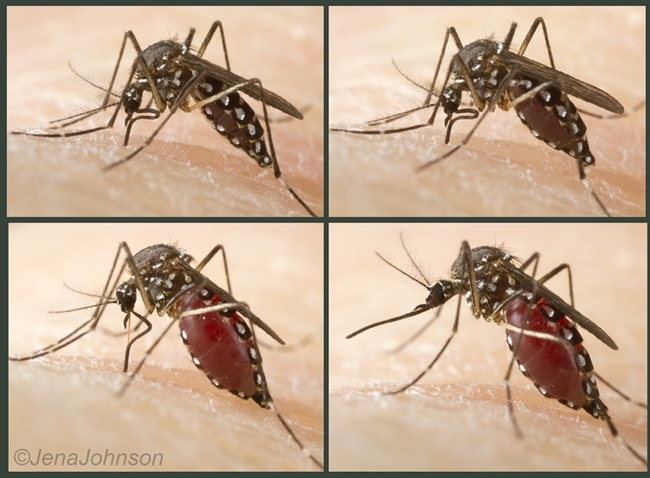
Aedes aegypti feeding on its host. (Photo by Jena Johnson)
Eight Decades of Bees 'n Skeeters
Quick! What do you think of when someone mentions "honey bees and mosquitoes" in the same sentence? Honey bees are the pollinators, the beneficial...
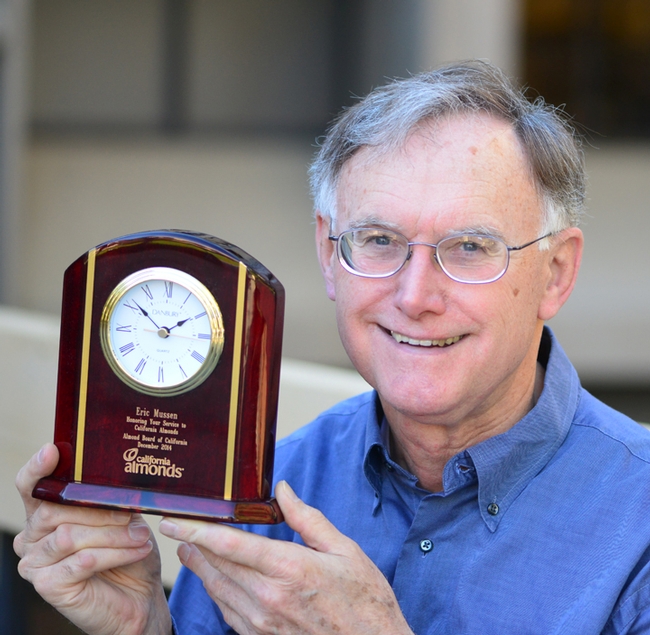
Extension apiculturist (emeritus) Eric Mussen with his engraved clock from the Almond Board of California. (Photo by Kathy Keatley Garvey)
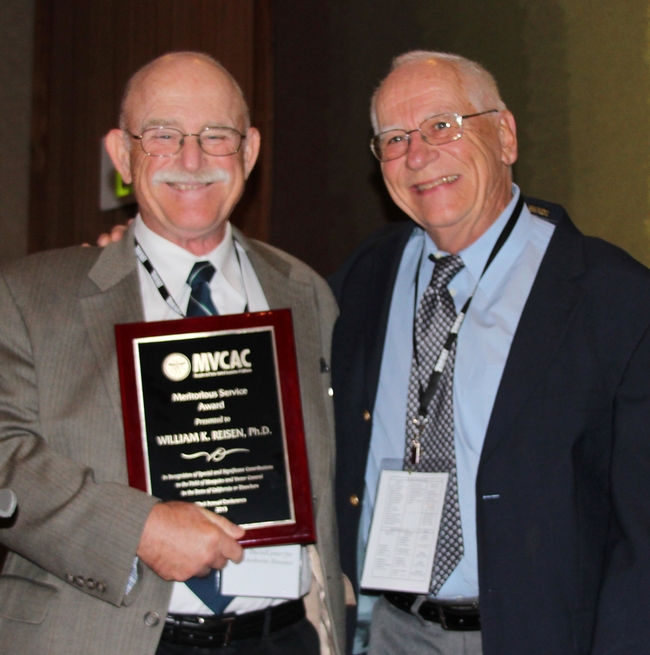
Medical entomologist William Reisen (left) with a MVCAC plaque presented by Bruce Eldridge, UC Davis emeritus professor of entomology. (Photo by Jill Oviatt, MVCAC)


